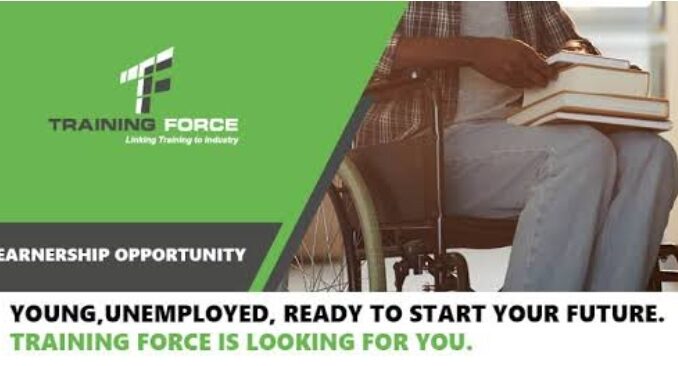
A Training Force Learnership is a structured program aimed at developing the skills of participants through a combination of theoretical education and practical workplace training. It’s a recognized initiative in South Africa, especially for unemployed youth, to address skills shortages and increase employability.
Detailed Overview of Training Force Learnerships
1. What is a Learnership?
A learnership is a formal education and training program that is registered with the South African Qualifications Authority (SAQA). It provides a blend of theory (classroom learning) and practical training (workplace exposure). Participants who complete the program earn a qualification registered on the National Qualifications Framework (NQF), which is recognized across South Africa.
2. Industries Covered by Training Force Learnerships
Training Force offers learnerships across various industries to cater to different career interests and workforce needs. Some popular sectors include:
- Construction: Training in bricklaying, carpentry, and other construction skills.
- Business and Administration: Programs focusing on office management, communication, and organizational skills.
- Health and Safety: Learnerships in workplace safety, first aid, and compliance.
- Security Services: Training for roles such as security officers, including PSIRA-accredited qualifications.
- Warehousing and Logistics: Skills in stock control, distribution, and supply chain management.
- Hospitality: Training in food services, accommodation, and event management.
3. Benefits of a Learnership
- For Participants:
- Earn While You Learn: Learners typically receive a monthly stipend during the program.
- Accredited Qualification: Completion awards a recognized qualification that enhances job prospects.
- Hands-On Experience: Real-world exposure in the workplace makes participants more employable.
- Career Advancement: Many companies absorb successful learners into permanent roles.
- For Employers:
- Access to a talent pipeline of skilled workers.
- Opportunity to upskill employees or community members.
- Tax incentives from the government for offering learnerships.
- Compliance with the Skills Development Act and B-BBEE requirements.
4. Duration and Structure
- Program Length: Most learnerships last 12 months, though some may be shorter or longer depending on the field of study.
- Components:
- Theory Component: Delivered in classrooms or training centers, focusing on foundational and industry-specific knowledge.
- Practical Component: Conducted in a real work environment where learners apply theoretical knowledge under supervision.
5. Eligibility Criteria
- Age Range: Typically aimed at youth aged 18–35.
- Educational Requirements: A minimum of Grade 12 (Matric) or equivalent. Some programs may accept lower qualifications depending on the industry.
- Employment Status: Open to unemployed individuals. However, employed learners can also join specific learnerships to enhance their skills.
- Documentation: Applicants need to submit proof of qualifications, identity documents, and sometimes a CV.
6. How to Apply for a Training Force Learnership
- Where to Find Opportunities:
- Check the Training Force website and social media platforms.
- Local newspapers or community centers may also advertise programs.
- Application Process:
- Submit your CV, ID, and qualifications.
- Complete an application form, which may include aptitude tests.
- Attend interviews or assessments, if required.
- Await confirmation of acceptance.
7. Key Goals of the Learnerships
- Skills Development: Provide critical skills for South Africa’s growing industries.
- Employment Opportunities: Enable participants to secure jobs after completing the program.
- Economic Growth: Reduce unemployment and improve productivity within industries.
By combining education and practical training, Training Force Learnerships empower individuals to enter the workforce with confidence, bridging the gap between academic learning and real-world application.

Leave a Reply